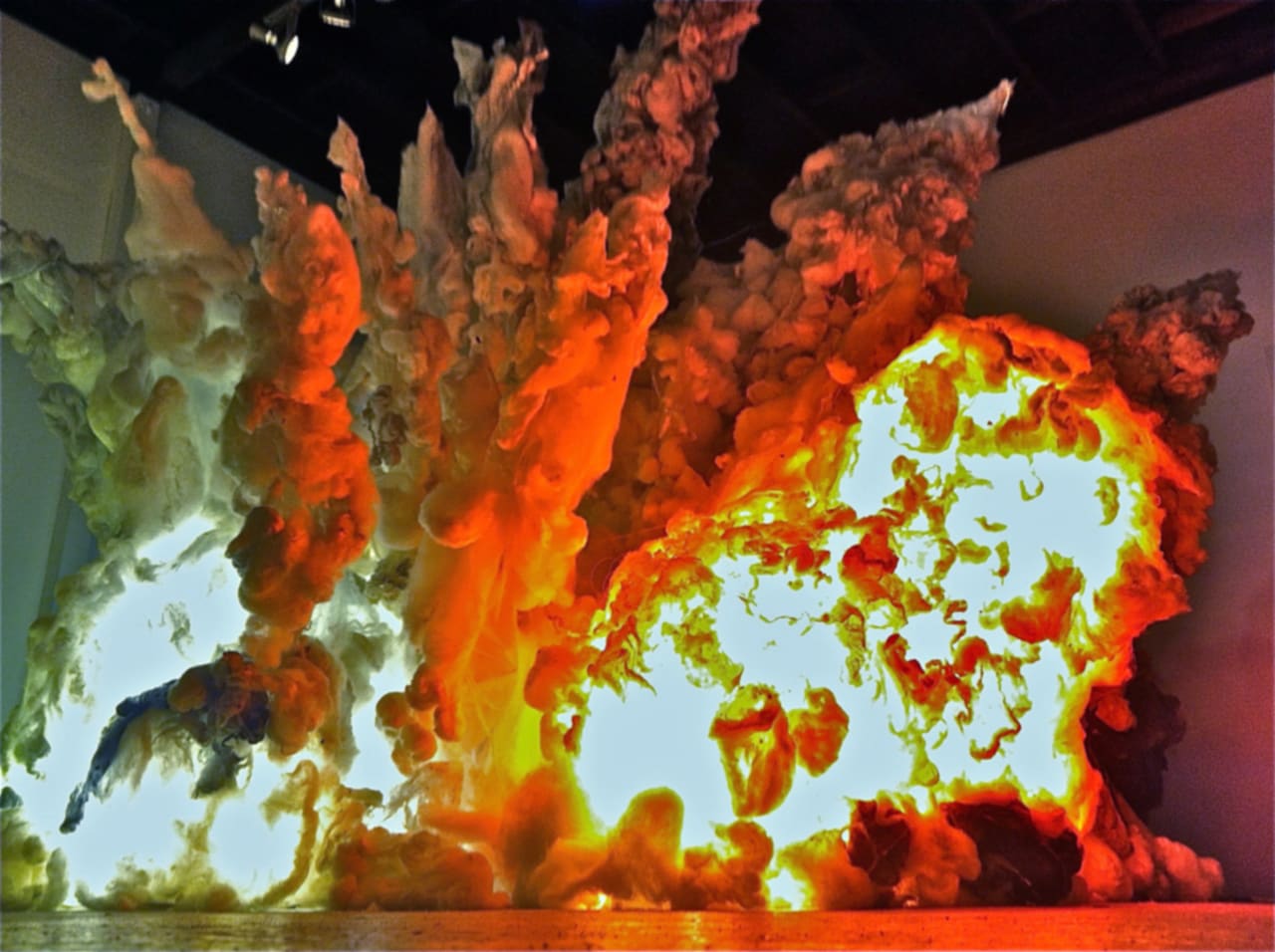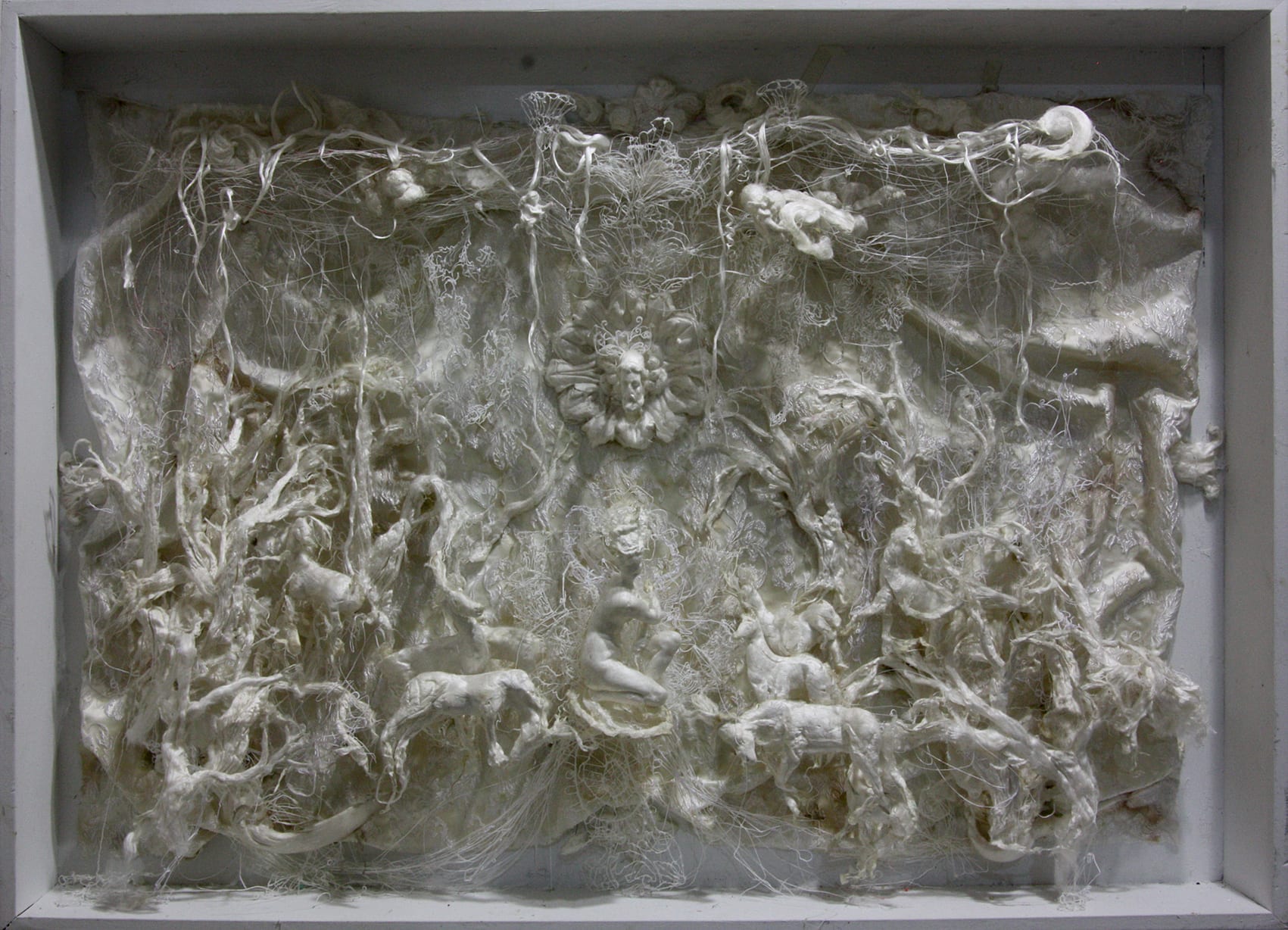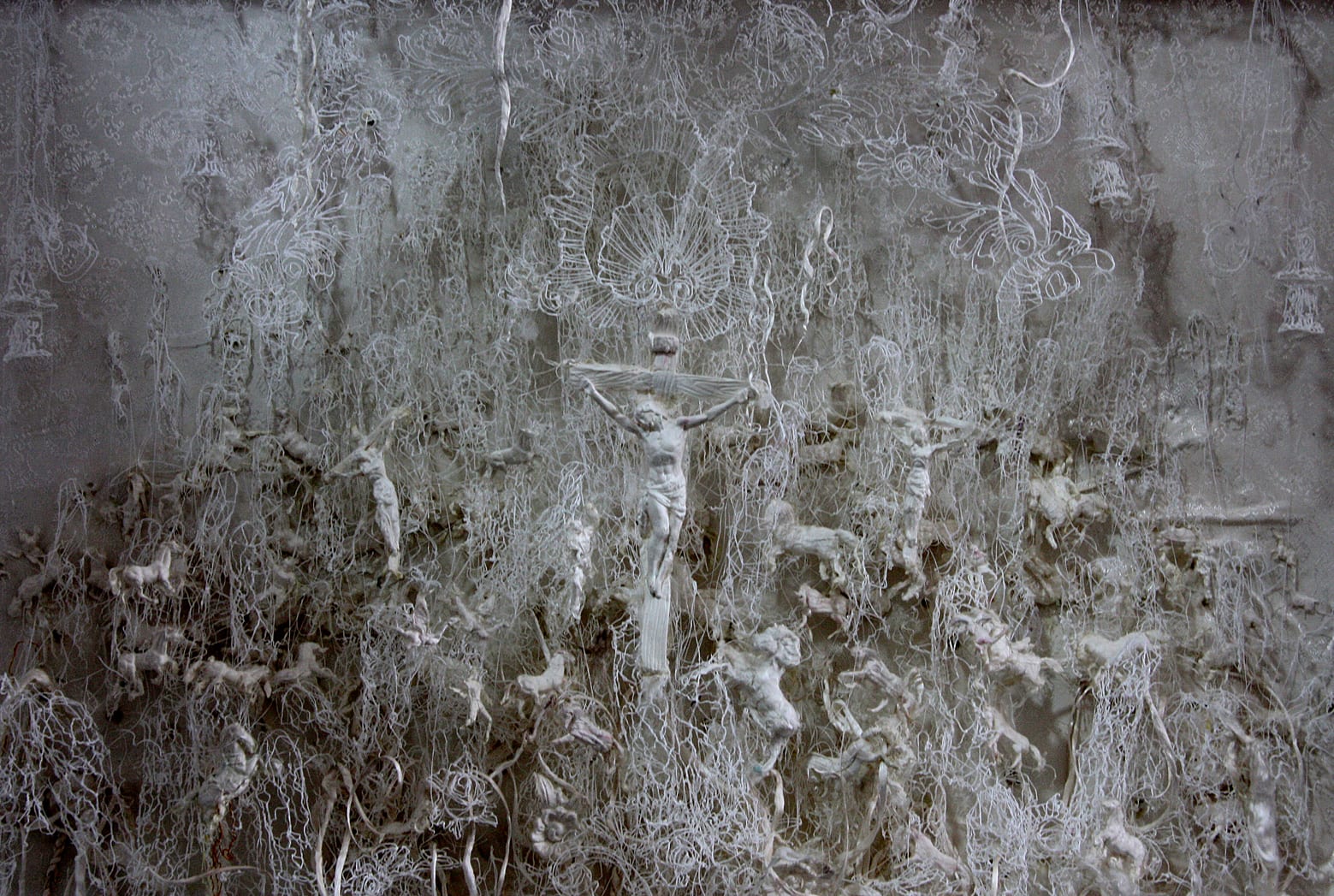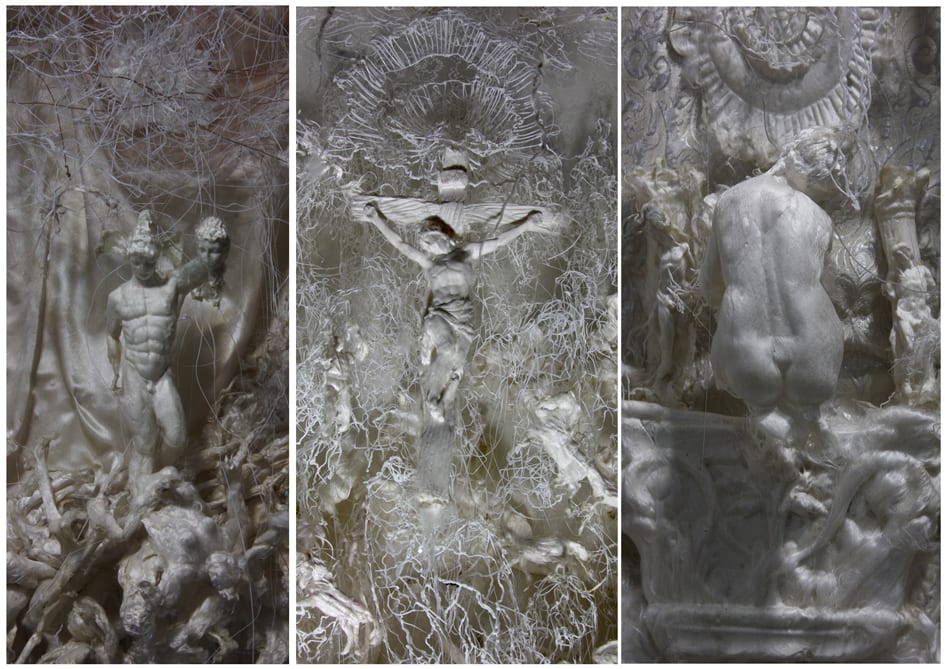The Match Factory, spring issue, 2019

Pablo Garcia-Lopez is a neuroscientist who dabs his sculptural scenes with fired-up neurons, the mazework of cellular processes, and embroiders for our delectation the immutable laws of nature, whose godlike hand wands forth a pathway of stars. To see his work in great numbers, as I have, is to recognize that Garcia-Lopez is undoubtedly a great artist. I do not say this lightly. A lyricist at heart, he is Mozart as a monster of energy: his architectural arias are sewn through with classical impulses, filigreed in silk, wire and foam.

His work is full of risk; it is as if he beds down at the edge of a volcano. Follow with your gaze the orbital mechanics of his silkwork in The Rut. Garcia-Lopez, like a funerary sculptor remaking the cellular universe with his revivification tools, succeeds magnificently. We are shocked awake by his art; we hang suspended, like sundrops trembling at the edge of infinity’s leaf; we drop meltingly into the river of time and are swept away. This is how we lose ourselves to his mesmerizing displays.To create such startling mise-en-scene, as the crucified figures hanging in their ethereal webbing in Battle of the Auerbach Plexus, is no easy feat. Crosses are surrounded by the frozen leaps of wild horses, scalloped sensations, wavecrests of foam, the crowning shells and lapping moss—a feast of a bas-relief!—in which the drama hidden within the body is made manifest, revealing a buried mytho-religious history of utter fascination. I marvel at his mastery to produce a controlled chaos. He might fool us into believing that he vowed a candle to the devil in order to acquire such awe-making skill, but anyone familiar with craft would recognize that Garcia-Lopez has worked like a demon and earned his authority, and he’s y0ung enough yet so he won’t be downing his tools any time soon (Gracias a Dios!). Who else could recreate the history scored onto our bones?

To Garcia-Lopez, looking through the unique gaze of the artist-scientist, “the nervous system is baroque.” The auerbach plexus lies within the gastrointestinal tract, and is said to act as the brains for the gut; Garcia-Lopez, a fantastic voyager willingly shrinking himself to a molecular level in order to spy upon the secrets of the body, unveils for us his conception of the mythic metabolism. Here are new flowers and new flesh after Rimbaud: racked, hacked, and suffering– captured in the still from the short film The Coming Age of Military Neuroscience. This is a bit of political theatre that reimagines Goya’s war-torn humans, their limbs deflated over sawn trees, amoebae dissolving in the roil of magma beneath.
As a Spaniard, Garcia-Lopez is deeply concerned with the history of Franquism (the Catholic ideology espoused by General Francisco Franco, former Caudillo of Spain from 1939-1975, who precipitated the bloody Spanish Civil War), in which the religious is intermixed with the militaristic; this, in turn, weaponized Catholicism, leading to the purging of scientists during the Franco era. So in his art, Garcia-Lopez, having concluded that religion can very well curdle and become death in the pot, turns the sacred canon upon itself, and in its deconstruction creates a myriad of small astonishments, like the feathering of oars in moonlit waters.
Perhaps this is why I find Garcia-Lopez’s work so moving, even fortifying; though much of his art explores the inevitable disintegration of the body as it ages, the very fact that he works often with silk, and in his innovations (such as using insulation spray foam to create baroque effects) creates supernal beauty, tells me that Garcia-Lopez has an abiding love for the human. I’d like to believe that after all the agonies and mythic ecstasies, after the breakdown of the body, our souls in their eagerness to escape the casing explode into a symphony of fire, and spray resolutely into the air in arcs of red and gold, as beautiful as the detonation illuminated in Silk Explosion II. So angelic is Garcia-Lopez’s vision that even the Father of Lies with his horns and tail would have no choice but to speak the truth before his art: this man is possessed by genius.
Pablo Garcia-Lopez, MFA, PhD, was born in Madrid in 1977. He earned his Bachelor’s Degree in Biochemistry from Autonoma University, and his PhD in Neuroscience from Complutense University. Later, he received an MFA from MICA (Maryland Institute College of Art). As a neuroscientist, he published numerous scientific papers in international journals. He is an expert on the legacy of Santiago Ramon y Cajal (an artist who is considered the father of modern neuroscience). During the last decade he has developed a career as an artist. His artistic work explores the connections between neuroscience, art, religion, and spirituality. His work has been shown nationally and internationally. His artwork has been published in Sculpture, Art for Progress, and The Raincoat Society, among many others. Garcia-Lopez is also the recipient of the following residencies, grants and awards: the Sculpture Space Residency, the Franconia Sculpture Park Residency, the Brooklyn Art Space Residency, the Scinema Award Australia, a Jerome Foundation fellowship, a Caixa Galicia fellowship, and a Ramon Areces Fellowship. He is a professor at the School of Visual Arts in the Humanities and Sciences Department.
Edwin Rivera is the Editor of The Match Factory and a Writing Instructor at the School of Visual Arts. He is a playwright, fiction writer, poet, and essayist. His first play, In the Palace of the Planet King, will be produced at the Wild Project theatre on May 9th, 2019, as part of the Downtown Urban Arts Festival.


